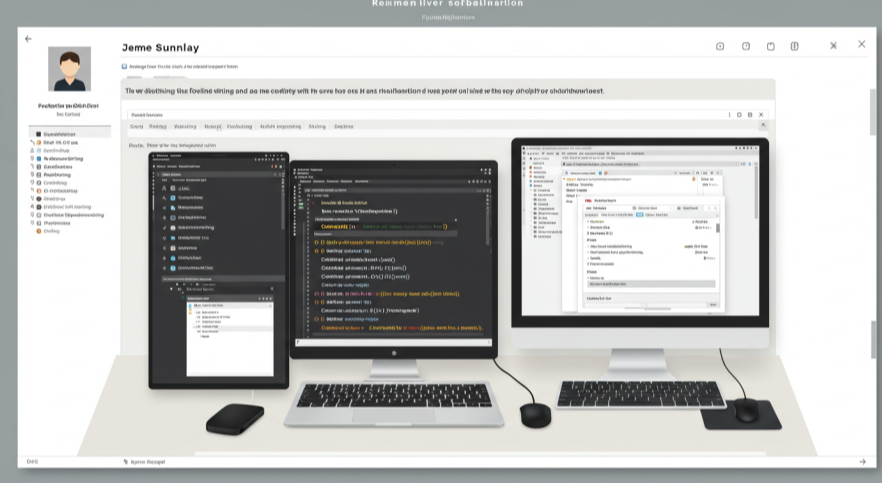"Be more specific with your summary (Full stack developer with expertise in __ and __). Tailor it to overarching requirements of the job."
A resume summary is a short paragraph—usually 3 to 4 sentences—placed at the very top of your resume. Its role is to highlight your core strengths: your background, technical capabilities, standout contributions, and overall professional focus.
It should give the reader a quick idea of who you are and what kind of work you’re good at. Done well, it saves recruiters time by giving them your best points upfront. For experienced engineers, it's a place to summarize years of work in just a few lines. For newer candidates, it’s a way to spotlight your potential. If you're unsure what to include, here's a full guide on how many skills to list on a resume that are relevant for engineers.
What it is not: It’s not a personal mission statement, and it’s not a list of soft skills with no proof. Avoid buzzwords and vague phrases like "team player" or "results-driven professional." If it sounds like it could go on anyone’s resume, it shouldn’t be on yours.
How to Write a Strong Software Engineer Resume Summary
Good resume summaries are short, but they don’t cut corners. Every word should add value. You don’t need to impress anyone with big words—clarity is more important than cleverness. Also, don’t forget to use a proper resume file name to boost your visibility in applicant tracking systems.
Focus on the essentials:
- Your experience level: How long you’ve worked in tech, and what kind of environments (startups, large companies, freelance, etc.).
- Key technical skills: List the tools, languages, or frameworks that are relevant to the job.
- Notable impact: Add a real outcome you contributed to—a performance gain, cost savings, or product improvement.
- Your direction: Show that you’re aligned with the company’s mission or challenges.
Example components:
- Years of experience: “Over 6 years building APIs and backend services…”
- Skills: “…using Node.js, PostgreSQL, and Redis…”
- Achievement: “…reduced response time by 40% and improved deployment efficiency…”
- Goal: “…now looking to build scalable systems in a growth-focused team.”
You don’t have to follow that exact format, but including these pieces will help you make a stronger impression. For formatting tips, this Google Docs resume guide can help you set up your engineering resume cleanly and efficiently.

Resume Summary Structures for Software Engineers
There isn’t one “correct” way to write your summary, but using a reliable structure can help you get started and keep it organized.
1. Experienced Professional Format
Best if you’ve worked in the field for 5+ years and want to showcase both leadership and technical depth.
Template:
[Years of experience] + [core skills] + [key achievement] + [intent aligned with job/company].
Example:
Software engineer with 9 years of experience building scalable microservices using Java and Spring Boot. Designed and deployed a real-time transaction system that improved processing speed by 35%. Skilled in leading agile teams and integrating CI/CD pipelines. Currently seeking to improve cloud infrastructure at [Company Name].
2. Skills-Focused Format
Great for candidates with a wide technical skill set, even if they’re not in a leadership role.
Template:
[Key technical skills] + [experience context] + [impact/result] + [what you want to contribute].
Example:
Proficient in React, Redux, and TypeScript with 5 years of experience building and maintaining web applications. Helped reduce load times by 50% through front-end optimization. Comfortable with cross-functional collaboration and UX improvements. Looking to create polished digital interfaces at [Company Name].
3. Achievements-Focused Format
Ideal if your past work led to specific, measurable outcomes.
Template:
[Project or result] + [role/experience] + [skills used] + [career direction].
Example:
Built an internal analytics dashboard that cut reporting time by 60% for a SaaS company. Over 7 years of experience working with Python, Django, and PostgreSQL. Regularly collaborated with product and data teams to improve efficiency. Now focused on developing tools that support business decisions at scale.
4. Entry-Level or Career Switch Format
Designed for students, junior developers, or career changers with limited experience.
Template:
[Degree or training] + [relevant skills/projects] + [learning or internship experience] + [growth mindset or goal].
Example:
Computer science graduate with hands-on experience using JavaScript, React, and Firebase to build personal projects and small apps. Completed an internship at a startup, contributing to the redesign of a customer onboarding flow. Eager to grow as a developer and solve meaningful problems in a collaborative environment.
Role-Specific Resume Summary Examples
Entry-Level Software Engineer
"Recent computer science graduate with experience building full-stack apps using Node.js and MongoDB. Completed a capstone project that improved file upload speeds by 30%. Curious, detail-oriented, and eager to contribute to a fast-paced development team."
Mid-Level Software Engineer
"Software developer with 4 years of experience creating secure REST APIs in C# and .NET. Implemented caching strategies that lowered response times by 45%. Passionate about building reliable backend services for data-heavy platforms."
Senior Software Engineer
"Senior engineer with 10+ years of experience leading product teams and designing architecture for large-scale cloud platforms. Built a messaging pipeline that handled over 3 million requests per day. Now looking to mentor developers and drive large-scale system performance improvements."
Front-End Developer
"Front-end engineer with 5 years of experience building responsive, accessible interfaces with React, Next.js, and SCSS. Improved conversion rates by 20% through a user-centered design update. Strong eye for detail and a solid understanding of performance optimization."
Back-End Developer
"Back-end specialist with 6 years of experience using Node.js, GraphQL, and PostgreSQL to power scalable e-commerce systems. Reduced server costs by 40% by streamlining database queries and migrating services to containers."
DevOps Engineer
"DevOps engineer with 7 years working in AWS environments, managing infrastructure as code and automating deployments with Jenkins and Terraform. Cut downtime during releases by 80%. Enjoys improving developer velocity and system stability."
Avoid These Mistakes in Your Resume Summary
Even a solid resume summary can miss the mark if it’s filled with the wrong kind of content. Watch out for these common pitfalls:
- Being too vague: "Hardworking developer with a passion for code" doesn’t say anything specific. Use real details about what you’ve done and what you know.
- Overusing buzzwords: Avoid generic phrases like “team player” or “fast learner” unless you back them up with real examples.
- Repeating your job title: Don’t just say you’re a software engineer—explain what type, what stack, what you’ve built, or how you’ve helped your team or users.
- Ignoring the job description: Your summary should speak directly to the needs of the role. Use terms and skills that match what the company is looking for.
- Typos or formatting issues: First impressions matter. Keep it clean, readable, and error-free.
Helpful Tools for Writing a Resume Summary
Here are a few free and paid tools that can make writing your summary faster and more effective:
- Jobhun Free AI Resume Builder – AI-assisted writing, real-time preview, and job-matching tips built for developers.
- Canva or Notion Resume Templates – For those who want to start with clean, professional designs that are easy to edit.
You don’t need to rely on tools, but they can save time and give you structure when you’re stuck.
Conclusion
Writing a resume summary isn’t about listing everything you’ve ever done. It’s about choosing what matters most and putting it front and center. Be clear, be specific, and don’t overthink it. A few well-written sentences can say more than a full page of jargon.
Use real examples from your past work. Think about what the hiring manager needs. Keep it honest and to the point. That’s how you create a summary that actually helps you get hired. To create a polished resume that stands out, use Jobhun easy-to-use AI Resume Builder online, and don’t forget to run your draft through our ATS-friendly Resume Checker for instant feedback and improvements.”
FAQ
How long should my resume summary be?
Aim for 3 to 5 concise sentences. Short enough to be skimmable, but long enough to show your strengths.
Should I write a new summary for every job?
Yes. Customize your summary based on the job title, company, and requirements. You don’t need to rewrite from scratch, but make sure it feels tailored.
Is a summary necessary for junior developers?
It can help a lot, especially if you’ve worked on personal projects, taken courses, or completed internships. Even if you don’t have a long work history, you still have something valuable to say.
What if I’m changing careers?
Focus on transferable skills, recent learning experiences, and your interest in the new field. Show that you’re capable and committed.

![How to Write a Software Engineer Resume Summary [Examples]](https://static.jobhun.com/jobhun/cms/prod/f_1749723057_2863.png)
